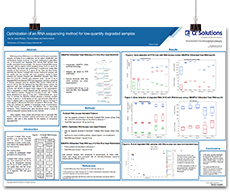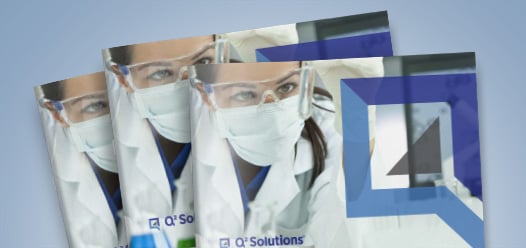
Optimization of an RNA sequencing method for low-quantity degraded samples
Optimizing the Illumina TruSeq® RNA Access method
RNA-sequencing (RNA-seq) is an effective tool for gene expression analysis, promising to be a diagnostic tool for patient stratification and individualized therapy. However, it has been challenging to apply RNAseq to low-quantity and degraded RNA derived from formalin fixed paraffin embedded clinical samples. The Illumina TruSeq® RNA Access approach, utilizing capture probes targeting known exons to enrich for coding RNAs, has shown high performance to profile poor quality RNA samples at input amounts at or above 20 ng.
Here, we have further optimized the Illumina TruSeq® RNA Access method for samples with low quality and low quantity, and have compared results to those obtained with libraries prepared with SMARTer® Stranded Total RNASeq-Pico Input Kit. Libraries were prepared using 1 ng and 10 ng of degraded RNA from Banked FFPE liver specimens, and were compared to libraries prepared using the standard RNA Access method with an input of 100 ng. We found that, while both methods are capable of comparable levels of performance, the RNA Access method is more cost-effective from a sequencing standpoint. These characteristics were maintained across a group of additional degraded samples tested by both methods.
Taken together, these results demonstrate that an optimized RNA Access method has consistent mapping performance and a high gene detection rate, and is thus suitable for the analysis of low-quantity degraded RNA.
Authors: Dan Su, Jason Powers, Thomas Halsey, Patrick Hurban
Complete the form below to access this scientific poster








